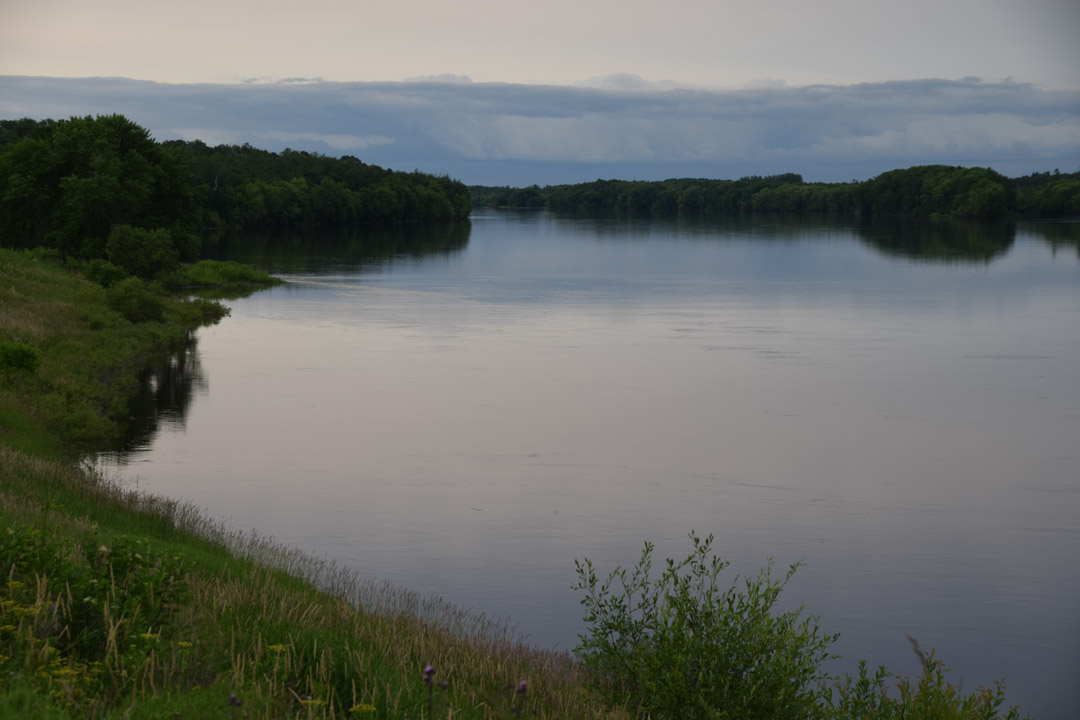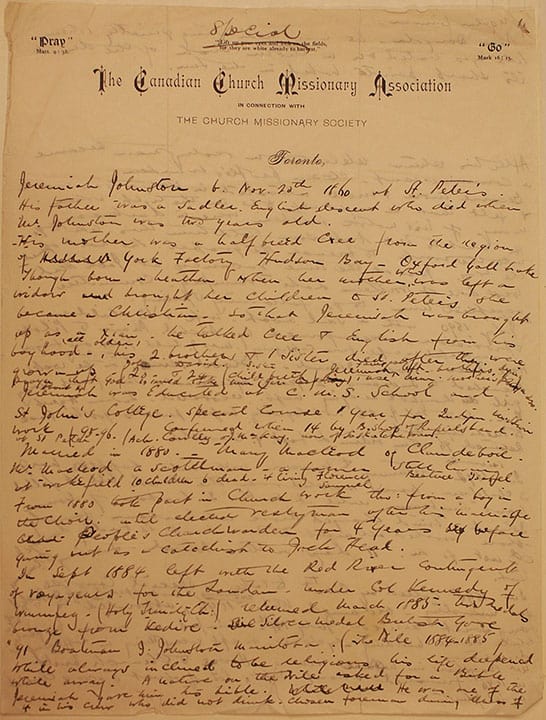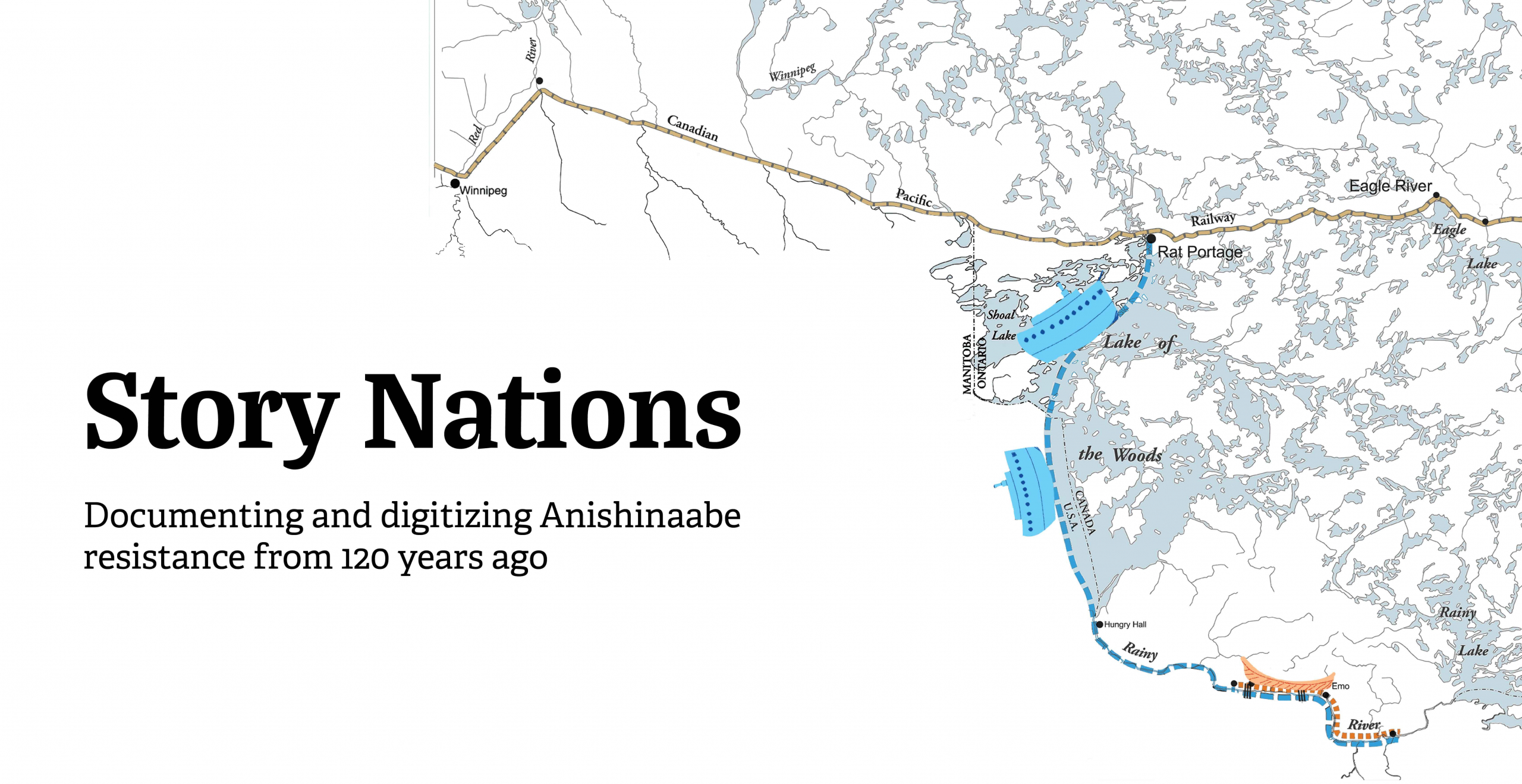In the summer of 1898, Frederick Du Vernet, an Anglican missionary from Toronto, left the city to travel west. Travelling by train, steamer, and canoe, Du Vernet journeyed to the grassy banks of the Rainy River. The long and slow moving river forms a part of the border between what is now northwestern Ontario and Minnesota.
Along the Canadian side of the river, Du Vernet met and spoke to the Anishinaabe — the region’s Indigenous residents — and recorded the encounters in his diary.
In doing so, Du Vernet documented a period of intense colonial expansion, as Canadians settled on Anishinaabe territory and illicitly claimed it as their own. Yet Du Vernet also recorded moments of Anishinaabe agency and resolve against the colonial order. Taken together, his diary unwittingly tells the stories of these people and their land on Manidoo Ziibi — the Rainy River.
The project
Du Vernet’s diary was stored for decades in a Toronto church archive. Today, it’s the focus of a collaborative project in digital storytelling called Story Nations. Students and faculty from the University of Toronto are working in close consultation with the Kay-Nah-Chi-Wah-Nung Historical Centre of the Rainy River First Nations to develop an edition of the diary that’s annotated, online, and available in text and audio format. Many members of the team have visited the Rainy River several times and continue to receive tremendous guidance and insight from Rainy River elders and community members.
I became involved with Story Nations just over a year ago, through U of T’s digital humanities Step Forward program. At the time, I knew little about Canadian history and much less about the Rainy River. To introduce me to the topic, the program director, religion professor Pamela Klassen, and its manager and web designer, doctoral student Annie Heckman, handed me a transcription of the diary with one or two supplementary readings and asked for my thoughts.
Thrust into the foreign time and place of the diary, what immediately stood out to me were the human characters that inhabited its pages. Du Vernet jotted down the stories of Anishinaabe weighing, on a daily and individual basis, the hodgepodge of Christianity and colonialism with their own traditions and faith. Many Anishinaabe protested Du Vernet’s presence as a Christian zealot on Anishinaabe land. Taken individually, these protests often amounted to seemingly little more than a woman refusing to be photographed by Du Vernet or even the slamming of a door. But stringing these moments together generates a larger mosaic of Anishinaabe opposition to the colonial order.

Those involved in the Story Nations research project visited the present Rainy River. Photo Courtesy of Keith Garrett.
Multiple spiritual worlds
The actions of other Rainy River natives defied strict categorization. Some Anishinaabe moved fluidly between Christian and Indigenous spiritual worlds. Out of frustration, Du Vernet wrote at one point that they were “facing both ways.”
Du Vernet described such a case when writing about Kitty, a young Anishinaabe woman from the Manitoban mission of Jack Head. Kitty had been baptized but later returned to Anishinaabe spiritual practices. She became fatally ill and one night prayed with Mary Johnston, the wife of a Christian missionary. “Oh God come and take me,” she prayed. She passed away the morning after. Johnston insisted on giving Kitty a Christian burial.
Du Vernet himself became a part of the spiritual interaction he observed. Returning from a walk along the river bank, Du Vernet heard “the sound of incantation” and followed it into a tent, where an Anishinaabe ceremony was taking place. Du Vernet noticed his presence was not welcome, but he nonetheless remained transfixed by the unfolding ceremony. Even though he thought “it was all such a fraud,” Du Vernet could not help but stand with an “uncovered head and a feeling of reverence.” He was both deeply moved and viscerally repulsed by the Anishinaabe spiritual world.
Collecting and telling stories, episode by episode
I found the little stories Du Vernet recorded to be the most graspable aspect of the diary. Looking at it all together, I saw the diary not as one long narrative, but as a collection of vignettes told to Du Vernet by the people around him. I proposed organizing the digital edition around this concept. Professor Klassen approved my idea, and together we grouped the diary into 20 ‘episodes.’
Each episode works like the chapter of a book, having a title and its own self-contained narrative. The episodes vary thematically, with some, like “Photographs After the Storm,” meditative and pastoral, and with others, like “The Story of Kitty,” tragic and solemn. The episodes tend to follow the rhythm of the Rainy River itself — calm in one moment, stormy and climatic in the next.
The episodic format renders the diary more digestible to the lay reader, but it is also appropriate culturally: stories figure prominently into Anishinaabe life. Elders pass down knowledge and history through oral storytelling. As the late Anishinaabe elder Basil Johnston wrote, “It is in story, fable, legend, and myth that fundamental understandings, insights, and attitudes toward life and human conduct, character, and quality in their diverse forms are embodied and passed on.”
While Du Vernet’s diary is a decidedly colonial artifact, using Anishinaabe storytelling conventions helped ‘Indigenize’ the document and its presentation. In line with this, each episode is accompanied by an oral reading. Also, Du Vernet’s stories are presented alongside videoed stories told by today’s Rainy River Anishinaabe.

Du Vernet documented examples of Indigenous Resistance in his diary. Photo Courtesy of Keith Garrett.
Continuing Story Nations
After my initial work on Story Nations, I continued to work on the project during the summer through the University of Toronto Excellence Award, and I now work on it as a research assistant. My tasks have centred around annotating the diary. Du Vernet references a slew of historical people, places, and terms that are unfamiliar to the modern reader. My job was to research these ambiguities and provide a short annotation or sometimes a longer article explaining them.
My regional and historical knowledge developed as I wrote these annotations. My work was much like exploring an unfamiliar region. The annotations served as familiar points of geography, like a raised ridge or a strange rock, and it was my job to map out everything around them.
Many of these annotations contextualize Du Vernet’s language. Sometimes, an annotation would explain what treaty money was or where the Lake of the Woods is located. Other annotations, however, contextualize Du Vernet’s language. Throughout the diary, he used derogatory terms to describe the Anishinaabe people and their ceremonies. The annotations work to explain the forces of colonialism, racism, and Christian supremacy that underlie these words and indeed much of Canada’s history.
Decolonizing ourselves
At this stage of the project, the biggest challenge is ‘decolonizing’ how I write — a concept Professor Klassen introduced me to. By this, she meant expunging artifacts of colonial thinking that linger in historical accounts. So, for example, at the start of this article, I wrote that the Rainy River is in “what is now northwestern Ontario.” A year ago, I would have been satisfied with just Ontario, but ‘Ontario’ is merely a small segment in the human history of the land. For much longer, it has been the land of Indigenous peoples and continues to be so today.
As I continue to decolonize my writing, I realize it is not out of a duty to apply, as some might think, ‘politically correct’ terminology. Rather, it is about writing history from an objective and accurate standpoint.
Still, much of the scholarship I use to research the Rainy River area, unknowingly or not, relies on colonial conventions that sanitize the real history. For instance, in researching the Cree community of York Factory — in what is now northern Manitoba along the shores of Hudson’s Bay — many histories of the site ended when it was ‘closed’ in 1957 and its people ‘relocated.’ No further explanations were offered. As I later learned, this version of the story, with a few austere sentences, left out the far uglier reality: the government forcibly moved Cree families from their homes and onto much poorer land. Some Cree today occasionally visit the old site of York Factory and their childhood.
A similar fate awaited the Anishinaabe of the Rainy River. In 1913 and 1914, just over a decade after Du Vernet’s visit, the government illegally amalgamated the seven Anishinaabe reserves along the river into one, forcing many of the people Du Vernet met to leave their homes and heritage.
Today, the Rainy River First Nations are in a long-term process to regain their land. In 2005, they agreed to a $71 million land settlement with the Canadian government that identified land for future reserve creation. Following a court order in February 2017, the governments of Ontario and Canada, together with the Rainy River First Nations, announced the creation of some 6,000 hectares of new reserve land.
As the Rainy River Anishinaabe continue to fight for a relationship of reciprocity and respect with the Canadian government, stories remain as vital as ever — for both remembering the past and for creating a better future. Du Vernet’s diary, while steeped in flaws, is nonetheless a part of those stories.


